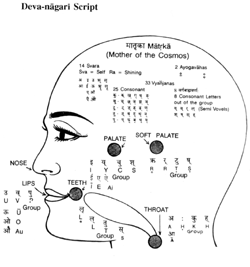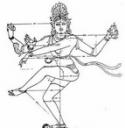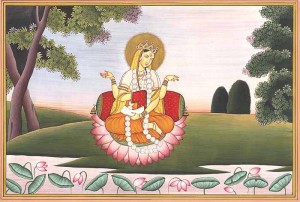Search results for abhinavagupta (7)
Kathak Academy , Shehjar, Kashmir Poetry
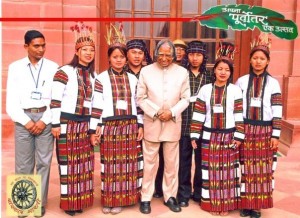
Artists from North East (Mizoram) with > Dr. APJ Abdul Kalam < at Rashtrapati Bhavan
Kathak (Hindi: कथक, Urdu: کتھک) is one of the eight forms of Indian classical dances, originated from northern India. This dance form traces its origins to the nomadic bards of ancient northern India, known as Kathaks, or storytellers. These bards, performing in village squares and temple courtyards, mostly specialized in recounting mythological and moral tales from the scriptures, and embellished their recitals with hand gestures and facial expressions. It was quintessential theatre, using instrumental and vocal music along with stylized gestures, to enliven the stories. Its form today contains traces of temple and ritual dances, and the influence of the bhakti movement. From the 16th century onwards it absorbed certain features of Persian dance and Central Asian dance which were imported by the royal courts of the Mughal era. Read More: > HERE <
Kashmiri Pandit (Hindi: कश्मीरी पण्डित) refers to a person who belongs to a sect of Hindu Pandits who originate from the Kashmir region in the Indian subcontinent. Many experts speculate that the Aryan Race originated in Kashmir and its vicinity. Kashmiri Pandits have made significant contributions to Indian thought and science. Abhinavagupta, Kalhana have been stalwarts in the fields of, philosophy and history respectively. Kashmir figures prominently in Sanskrit poet Kalidasa’s compositions but it is not known conclusively whether he hailed from that ethnicity or region. The birth place of CHARAKA one of the founders of AYURVEDA and INDIAN MEDICINE in general is also considered to be in Kashmir. Read More: > HERE <
The Pandit Shambhu Maharaj Kathak Academy was established to offer an all encompassing training in Kathak and Hindustani music. Apart from Kathak, and Hindustani Vocal, other courses being taught are Tabla, Yoga and Sanskrit. The teaching is of a uniformly high standard and the students are constantly encouraged and supported with scholarships and freeships, workshops and interactive sessions with renowned artists. The students are also provided the hostel facilities in a much secure and appropriate environment.
The school offers training at three levels.
About Vashwati Mishra – DANCE is my language, friend, identity, reflection, strength, medium and my consciousness.
Kathaks Improvisational character draws me. Every moment of the dance has its own innate beauty and enjoyment speed,rhythm,grace, expression It reflects all the colours of life.
Most people dream and then there are the few who give concrete shape to their dreams. In 1984 Vaswati Misra, an exponent of Kathak, choreographer and teacher started to give shape to her dream. With no financial support, but with the good wishes of friends and family she founded Dhwani, a center for the performing arts. She chose the name with care. Commonly taken to mean sound, for her, the meaning was definitely „In which the implied is more striking than the expressed“ The meaning reflected perfectly her approach to both choreography and performance. Read More: > Here <
Dhwani a cultural organization. Registered in 1984. Recognized by Indian Council for Cultural Relation, Department of Culture, Ministry of HRD, CID, Unesco.
About Shehjar – The idea of an e-magazine, with focus on multiple aspects of our rich cultural heritage, politics, philosophy, community news, views, people, community business promotion,networking,matrimonials,entertainment, new songs & videos and other such, originated in the middle of 2007. We are amazed at the pace the events have unfolded, converting those initial turbid perceptions into a reality.
Though we intend to have special, theme based issues as well, we endeavor to put together an interesting mix of articles, poems and event sections in each issue. Every issue attempts to have a fair representation in terms of variety of content and subjects. A web based magazine does not have limitations with regard to the publishing of high quality multimedia content, like graphics, audios and videos etc. as compared to the traditional subscription-based print magazines that inherently lack some of these feature.
Conceived and designed to be an interactive online magazine to serve the large global Internet readership, Shehjar will appear at regular intervals. Its hosting website, kashmirgroup.com, will be ever active and responsive to readers, with features like discussion forum, news and readers’ feedback. We hope that you will find these features interesting and keep us busy with your participation. With a global membership database and subscription listof about 10,000 registered users/members in our group, the possibilities of immediate readership are limitless.
*****
Shri G.L. Kaul retired as an Information officer for the J&K State. He had also been editing Kashmir Today ( English) and Tameer (Urdu) both official magazines of Information Department. As an avid theater activist he has acted in and directed many plays in Kashmiri, Urdu, Hindi and Punjabi, performing all over the country. He is the founder member of J&K cultural academy and IPTA group.
> Girdhari Ji’s Poetry VIDEO <
*Kashmirii Kavita Tehar-ta-charvan, *Urdu/Hindi Kavita Aye Mere Ghar*
One of the many talents of Girdhari Ji is his ability to write poems in several languages; that connect instantly with the reader. And what tops even that is the narration of this poetry in his lyrical voice and style. We are delighted to inform our subscribers that in this issue of Shehjar and in several forthcoming ones, we will be presenting videos of Girdhari Ji narrating several of his poems. These videos were prepared by his son Prof. Sanjay Kaul when Girdhari Ji was in the Boston area.
The two videos in this issue are in Kashmiri and in Hindi-Urdu. The Kashmiri is chaste and words flow easily, making his poetry well suited for musical compositions. We are suggesting that some of the musicians among our readers create memorable songs based on Girdhari Ji’s poetry and request you to contact us if you would like to do so. We will put you in contact with Girdhari Ji.
Our email id for all correspondence is editor.shehjar@gmail.com
SRI PURAM – TANTRA RESEARCH CENTER
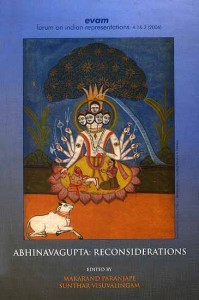
> ISHWAR ASHRAM TRUST BOOK´s <
>I.I.H.S. FREE BOOK DOWNLOADS <
(Abhinavagupta’s Commentary on the Bhagavad Gita)
Abhinavagupta (Kashmiri: अभिनवगुप्त) (approx. 950 – 1020 AD) was one of India’s greatest philosophers, mystics and aestheticians. He was also considered an important musician, poet, dramatist, exeget, theologian, and logician – a polymathic personality who exercised strong influences on Indian culture.
He was born in the Valley of Kashmir in a family of scholars and mystics and studied all the schools of philosophy and art of his time under the guidance of as many as fifteen (or more) teachers and gurus. In his long life he completed over 35 works, the largest and most famous of which is TantrÄ�loka, an encyclopedic treatise on all the philosophical and practical aspects of Trika and Kaula (known today as Kashmir Shaivism). Another one of his very important contributions was in the field of philosophy of aesthetics with his famous AbhinavabhÄ�ratÄ� commentary of NÄ�ṭyaśÄ�stra of Bharata Muni. Read more: > Here <
Tantra is that Asian body of beliefs and practices which, working from the principle that the universe we experience is nothing other than the concrete manifestation of the divine energy of the Godhead that creates and maintains that universe, seeks to ritually appropriate and channel that energy, within the human microcosm, in creative and emancipatory ways.
Shripuram Trust was established in the year 2006. We are located in a serene peaceful village, Madayikkonam near Irinjalakkuda in Thrissur District. Shri. L Girishkumar is the founder chairman of the trust. He is a well-known personality in spiritual as well as cultural circles. He is the disciple of Shri. Madhavji who was an acharya and a guiding light in the field of Tantra.
What is Tantra?
Tantra means technique-a technique for the fulfillment of desires. Man has no control over his desires. A desire is claimed as one’s own only after it comes to one’s mind. Desires are products of latent tendencies / vasanas. Through the fulfillment of the desires,‘vasanas’ are eliminated. Tantra provides the methodology whereby, through the fulfillment of one’s desires, liberation is attained. Liberation means understanding one’s own nature.From that understanding, one realizes that the world is nothing but the manifestation of the consciousness of which we are,but only a part. It is also a way of living which provides aesthetic enjoyment and knowledge. There is a shortage of proper understanding and practice of Tantra in today’s world. According to Abhinavagupta, a 10th century Tantra scholar who lived in Kashmir, Tantrasastra is the best among all sastras.(Dein Ayurveda Net:…. >„abhinavagupta“<)
The Objectives of the Trust
- The main intention of Shripuram Trust is to propagate the humanitarian aspect of Tantra in today’s world which is lacking in its understanding of this powerful Sastra.
- Our help is extended to those people who are genuinely interested in and are keen to understand and study Tantra in systematic manner.
- To preserve, we digitize manuscripts both palm-leaf and paper.
- For propagation, we study the manuscripts and try to revive the ancient rituals for the benefit of the mankind.
Moderne Physik – Klang & Schwingung
SPRACHE KLANG & SCHWINGUNG
>> THE MYTH OF QUANTUM CONSCIOUNESS <<
Nicht nur in der modernen Physik, bzw. neuesten naturwissenschaftlichen Erkenntnissen hat Masse keine materielle Substanz mehr, und man ist daher nicht mehr der Ansicht, dass Teilchen aus irgendeinem Grundstoff bestehen, sondern sie sind Energiebündel… diese dynamischen Strukturen oder Energiebündel bilden die stabilen nuklearen, atomaren und molekularen Strukturen, die die Materie aufbauen und ihr den Anschein geben, als bestünde sie aus einer festen materiellen Substanz. Doch gehen wir zurück zur Auffassung der Tantras hinsichtlich dieses Themas:
Bharatanatyam, Laya-Yoga & Meditation
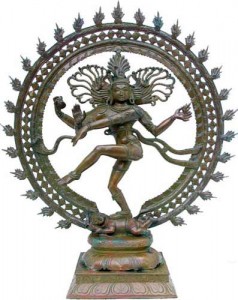
> Körperlichkeit & indische Philosophie in (laya) Yoga & Bharatanatyam <
by Angela-Petra Saber-Zaimian
„yato hastas tato drstir, yato drstis tato manah, yato manas tato bhavo,yato bhavas tato rasah“ – Abhinayadarpana, Vers 37, Nandikesvara . Wo die Hände sind/sich hinbewegen dort ist der Blick, wo der Blick ist, ist der Geist,wo der Geist ist, ist das Gefühl, wo das Gefühl ist, ist (entsteht) Rasa.
> Abhinavabharati < an interpretation of Bharata’s Natyasastra
> Abhinavabharati < Pearls from 4th Chapt. Abhinavabh�rat�
Abhinavabharati is a commentary on ancient Indian author Bharata Muni’s work of dramatic theory, the Natyasastra. It is the only old commentary available on this work.
The Abhinavabharati was written by Abhinavagupta (ca.950-1020), the great > Kashmiri Saivite < spiritual leader and a yogi.
In this monumental work, Abhinavagupta explains the rasasutra of Bharata in consonance with the theory of abhivyakti (expression) propounded in Anandavardhana’s (820-890) work Dhvanyaloka („aesthetic suggestion“), as well as the tenets of the Pratyabhijna philosophy of Kashmir.
According to Abhinavagupta, the aesthetic experience is the manifestation of the innate dispositions of the self, such as love and sorrow, by the self. It is characterised by the contemplation of the bliss of the self by the connoisseur. It is akin to the spiritual experience as one transcends the limitations of one’s limited self because of the process of universalisation taking place during the aesthetic contemplation of characters depicted in the work of art.
Abhinavagupta maintains that this rasa (literally, taste or essence). Rasa, the final outcome is the summum bonum of all literature.
Bibliography
Natyasastra of Bharatamuni : Text, Commentary of Abhinava Bharati by Abhinavaguptacarya and English Translation/edited by Pushpendra Kumar. Translated by M.M. Ghosh. Delhi, New Bharatiya Book Corporation, 2006, 3 Vols., 1614 p
SIVA SUTRA YOGA DISKURSE IM SHAKTI CENTER
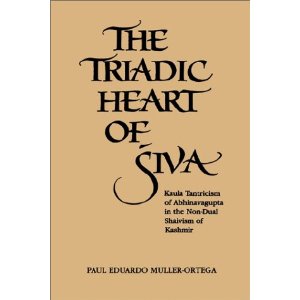
hallo ihr lieben, auch im sommer 2010 finden im shakti-center yoga-kurse statt, zu denen ich euch herzlich einladen möchte. diesen sommer gibt es die grossartige gelegenheit die SIVA SUTRAS OF ABHINAVAGUPTA durch interessante Yoga Diskurse näher zu erörtern. Buchtipp: www.exoticindiaart.com
![]()
termine: auf Anfrage
kosten: freiwillige spende
kursort: shakti-center, 1120 wien, malfattigasse 37
mail: melanie@deinayurveda.net
mobil: +43 (0) 664 652 79 76
liebe grüße, melanie.
shakti-Center – health . wellness . harmony
1120 Wien, Malfattigasse 37
Home: www.shakti-center.com
tantra, hatha u. layayoga & bharatanathyam
Körperlichkeit und indische Philosophie in tantra und yoga,…
„yato hastas tato drstir yato drstis tato manah yato manas tato bhavo yato bhavas tato rasah“ „Wo die Hände sind /sich hinbewegen/, dort ist der Blick, wo der Blick ist, ist der Geist, wo der Geist ist, ist das Gefühl, wo das Gefühl ist, ist /entsteht/ Rasa. Vers Nr. 37 des Abhinayadarpana von Nandikesvara
Der Tanz jivas im vedanta:
Hatha- und Laya Yoga ist eine Erlösungspraktik innerhalb des Tantrismus. Seit ungefähr 500 n. Christi treten die Strömungen des Tantrismus und Shaktismus auf. Diese bestehen aus einem Komplex von religiösen, rituellen und mystischen Phänomenen, die die religiösen Ausdrucksformen des Hinduismus bis heute prägen. Ohne die Tantras studiert zu haben, kann man den Hinduismus nicht wirklich verstehen, meint Klaus Mylius.
Traditionelles TANTRA & Kundalini Shakti
TRADITIONELLES TANTRA
in der Tradition der śaktÄ�ḥ – Indien
“Tantra in seinem Ursprung hat vielerlei Bedeutung. Im Besonderen ’Ausdehnung’, in dem Sinn, – “…dass wir uns ausdehnen und der Freude entgegenwachsen, wenn wir unsere eigenen Energien erst einmal verstehen & harmonisch vereinigen.”
Die Ursprünge lassen sich bereits in den Veden (> Arthavaveda < , ferner im Rig Veda) finden und bei der drawidischen Urbevölkerung Indiens (Indus Kultur). Thema ist der weibliche Aspekt des Lebens.
Wie kann uns Tantra helfen ?
Tantra ist die heilige Kunst unser Inneres und Äusseres Dasein mit der Realität vom kosmischen Bewusstsein und der Glückseligkeit zu verweben. Es ist nicht, wie im modernen Tantra, ein Streben nach Genüssen und Sensationen. Die Anwendung Tantras als ein Werkzeug unser Leben in feinere Ebenen sowie Spiritualität zu bringen, führt uns in die Harmonie der universellen Heiligkeit. Das Verstehen der eigenen wahren Natur entfaltet die Mystik der Liebe, Mitgefühl, Toleranz und Frieden.
What is Tantra?
Tantra means technique-a technique for the fulfillment of desires. Man has no control over his desires. A desire is claimed as one’s own only after it comes to one’s mind. Desires are products of latent tendencies / vasanas. Through the fulfillment of the desires,‘vasanas’ are eliminated. Tantra provides the methodology whereby, through the fulfillment of one’s desires, liberation is attained. Liberation means understanding one’s own nature.From that understanding, one realizes that the world is nothing but the manifestation of the consciousness of which we are,but only a part. It is also a way of living which provides aesthetic enjoyment and knowledge. There is a shortage of proper understanding and practice of Tantra in today’s world. According to Abhinavagupta, a 10th century Tantra scholar who lived in Kashmir, Tantrasastra is the best among all sastras. Tantra Research Center: www.shripuram.org/
Im SHAKTI-CENTER ist jeweils Sonntag bei brahmacharia Melanie Gelegenheit einen Einblick in die authentische Kunst und Kultur Tantras und deren Naturwissenschaften zu erlangen.
